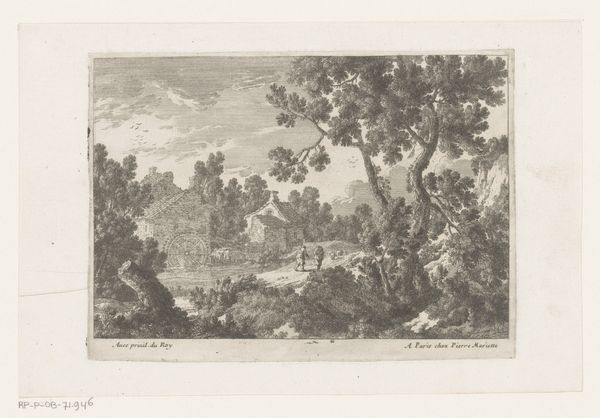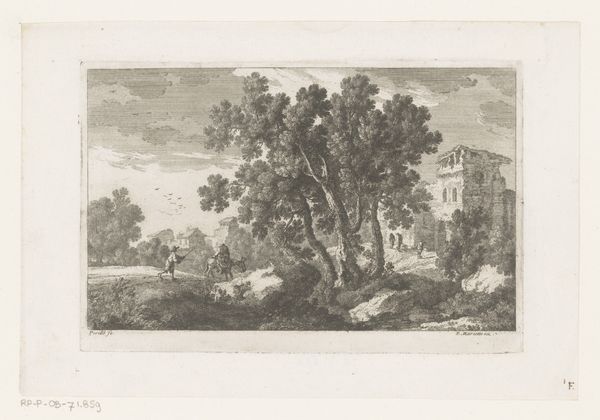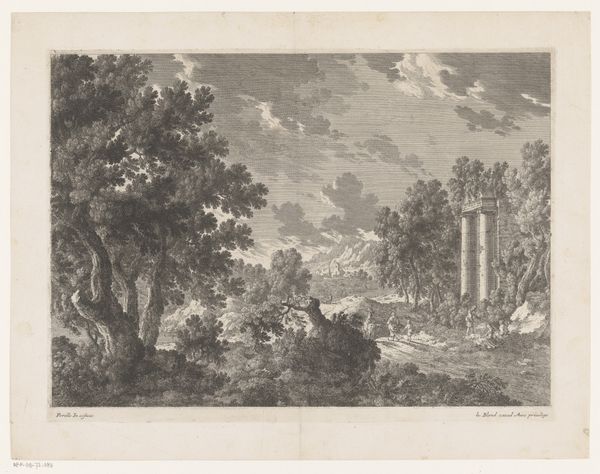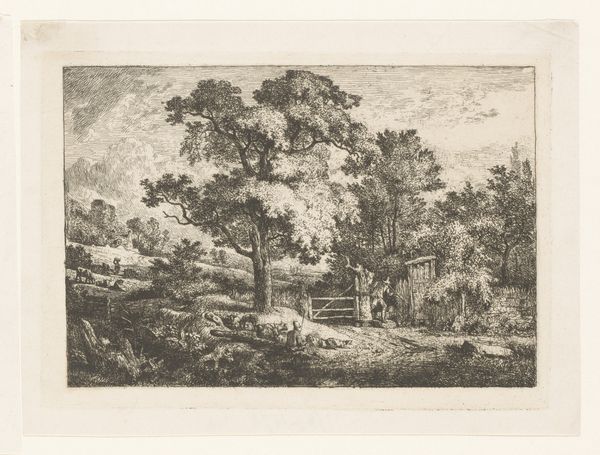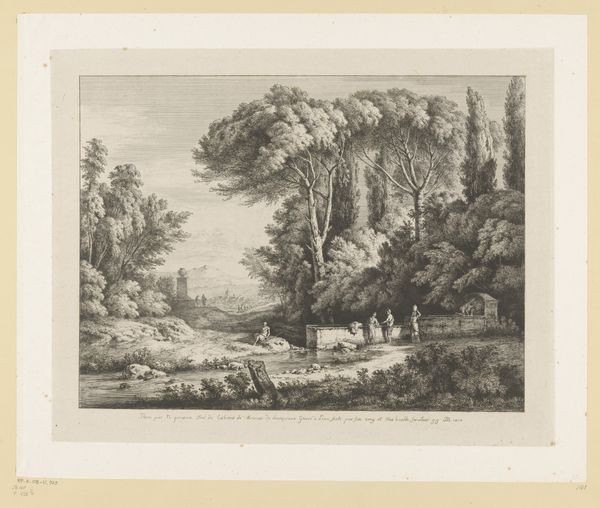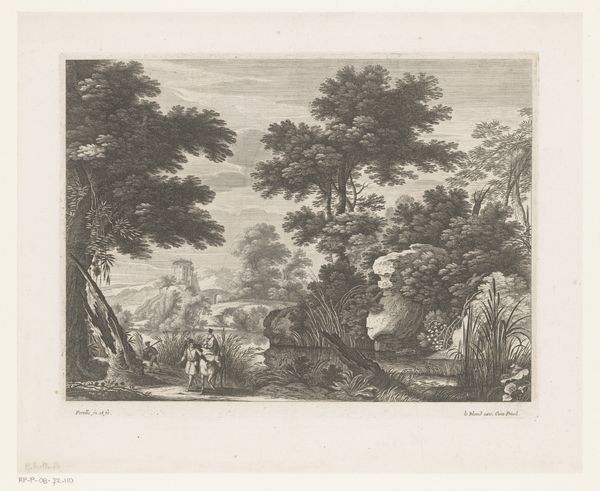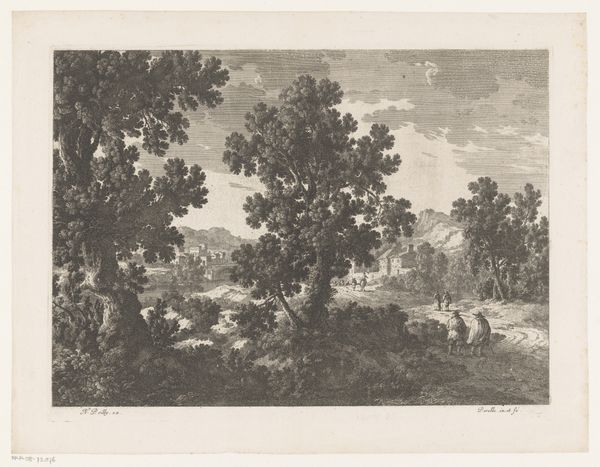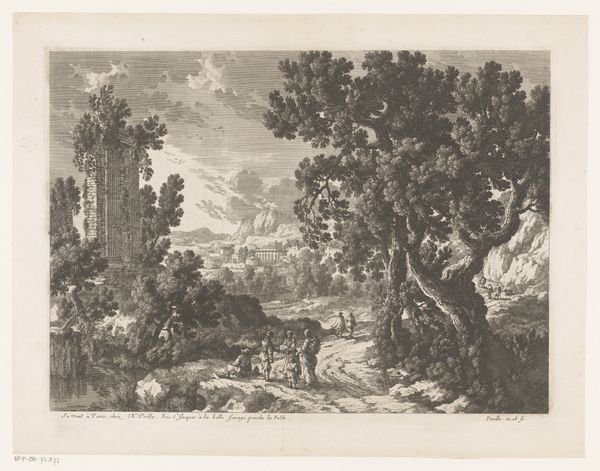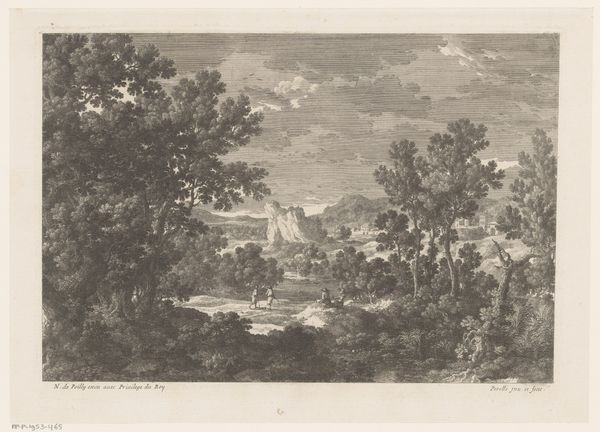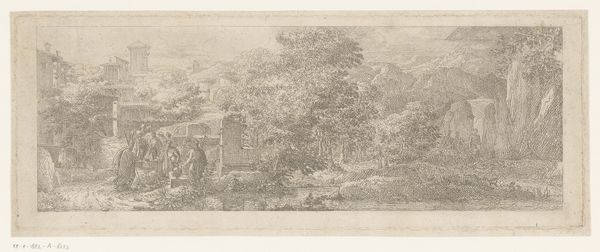
print, engraving
#
baroque
# print
#
landscape
#
form
#
line
#
engraving
Dimensions: height 224 mm, width 322 mm
Copyright: Rijks Museum: Open Domain
Nicolas Perelle made this print depicting the myth of Narcissus, but it’s less about the story, and more about the making. Consider the etching process itself: a metal plate coated with wax, lines scratched through it, then acid is applied, biting into the exposed metal. Ink fills these grooves, and pressure transfers the image to paper. The result is a reversed image, rendered in delicate lines. Now, think about what Perelle chose to depict: an idealized landscape, classical ruins, and of course, Narcissus gazing at his reflection. This wasn't just about aesthetics; it was about social status. Owning prints like these signaled taste and refinement, aligning oneself with the cultural elite. But let's not forget the labor involved. The engraver, likely working in a bustling workshop, meticulously transferred Perelle’s design onto the plate. This print, then, is a testament to both artistic vision and skilled craftsmanship, blurring the lines between art and industry.
Comments
No comments
Be the first to comment and join the conversation on the ultimate creative platform.
